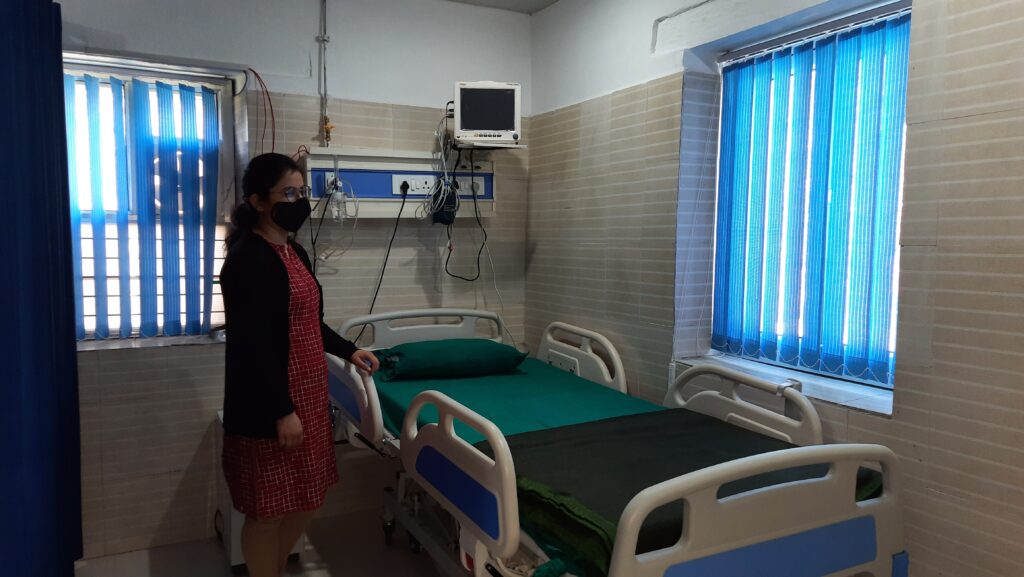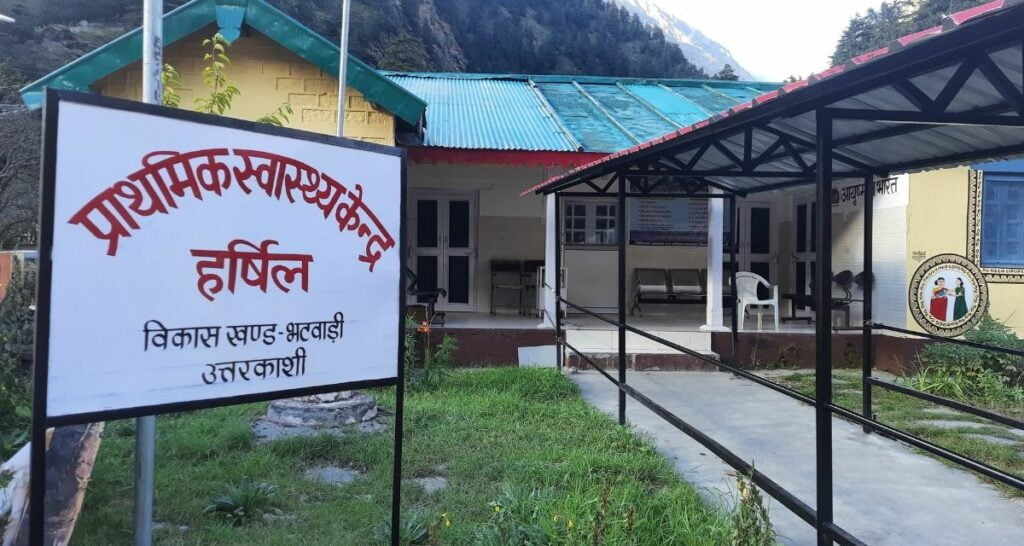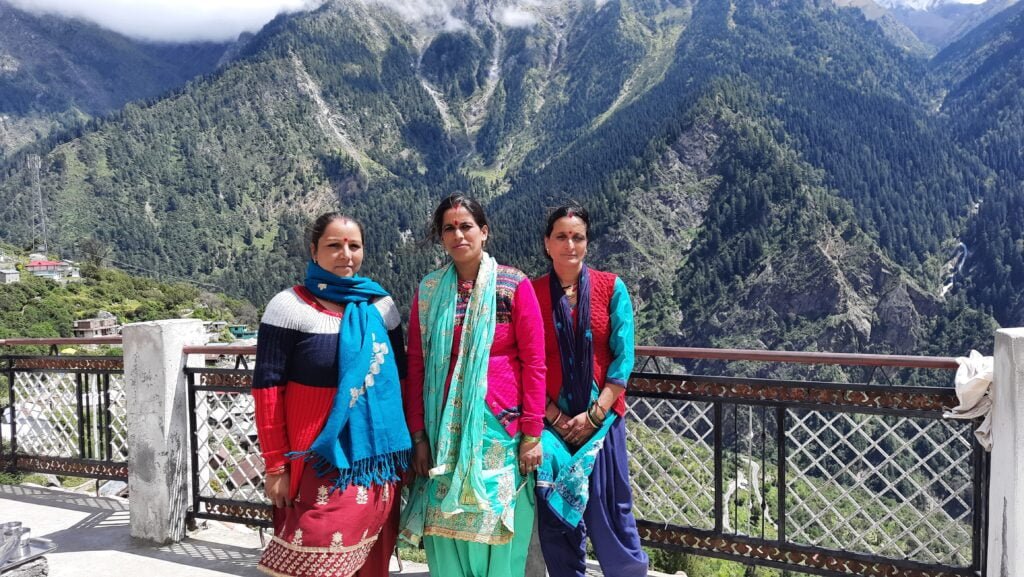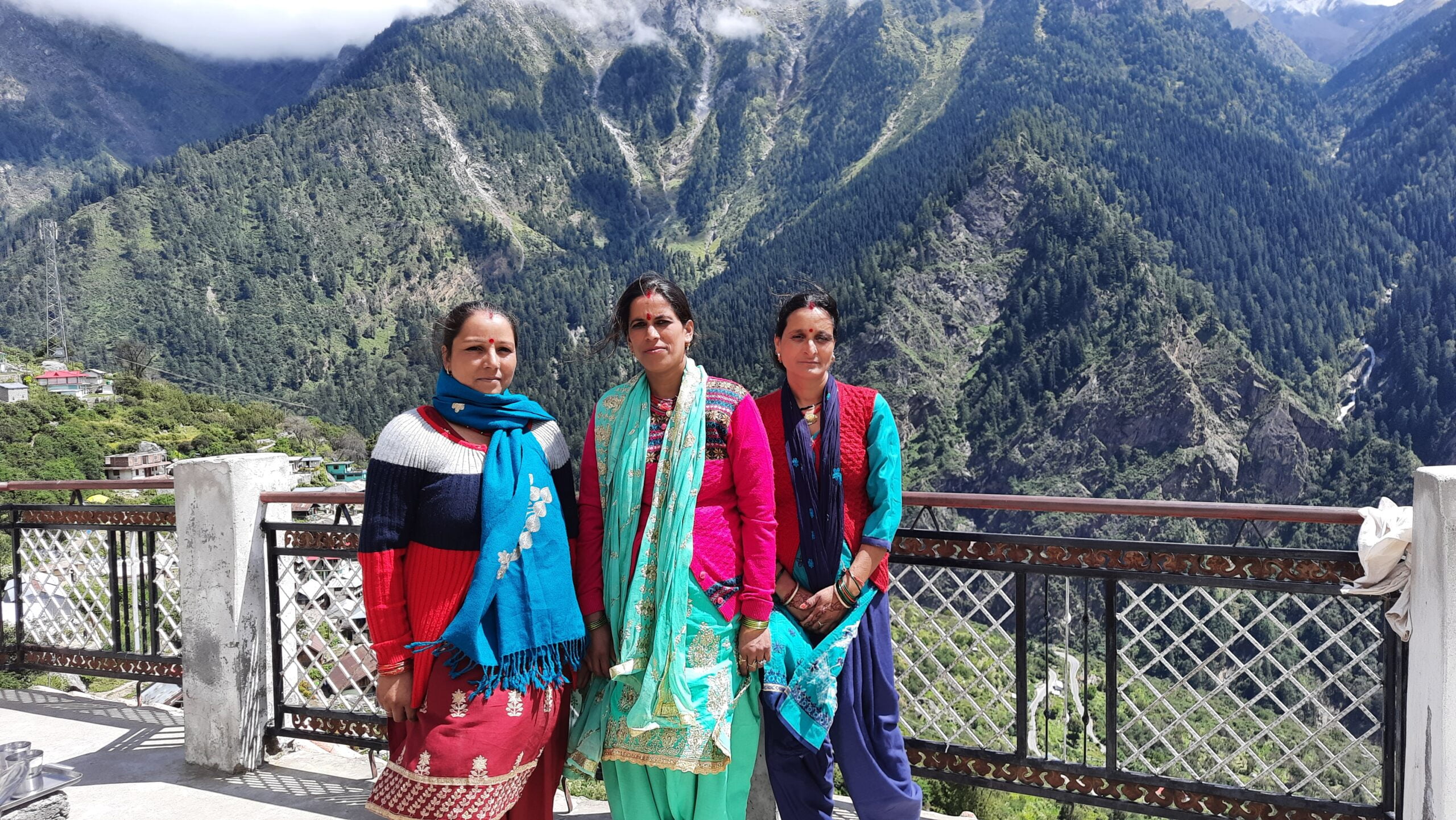Posted by Varsha Singh
Situated at an altitude of 2,745 metres, Harshil Ghati in Uttarakhand draws people from all over India who admire the pristine beauty of remote mountain villages set amid the echo of the fast-flowing Bhagirathi river.
But the very remoteness that makes up this paradise turned into a curse for the people of the hill state when Covid came calling in April-May this year.
Like elsewhere in India, the second wave of the pandemic took the hill folk of the district by surprise. Shilpa Negi (33) of Bagori village in the valley was staying in Dunda village near Uttarkashi when she developed a fever. Like most other people of Harshil Ghati, she had migrated to Dunda because of extreme cold in the region from October onwards.
“When my body started breaking down due to high fever, I understood that I too had got Covid. Our entire village was sealed in the last week of April. First aid is available at a Community Health Center (CHC) in Dunda, but if seriously ill, one has to travel to Uttarkashi or Dehradun only,” she said. Uttarkashi, where Shilpa’s first child was born, is about 25 km from Dunda and about 170 km from Dehradun.
Dearth of healthcare
Many villages in Uttarakhand have been plagued with inadequate and inaccessible healthcare, shortage of doctors and auxiliary nursing midwives (ANM), and poor access to the precious Covid vaccine – which many hill folks see as the only way out of the pandemic.

Till September 27, as many as 7,393 people lost their lives to Covid in the state.
Uttarkashi, with a population of 3.30 lakh, has one district hospital, two community health centres (CHC) and three primary health centres (PHCs). Two pregnant women died in the district hospital on September 10 and 20 this year. For one, the search for a doctor started at 3 pm and ended at 9 pm.
Sarita Rawat, head of Bagori village, lamented the state of PHCs, saying that the one in Harshil, which has as many as eight villages under it, is a primary health centre just in name.
The PHC got its first doctor in June this year, after waiting for almost a year since the administration complained of a shortage of doctors in district hospitals during the second wave of Covid.
Sarita, now waiting for her second dose of the Covid vaccine, added, “We are being given the Covishield vaccine. Its second dose is given after 84 days. We don’t feel this is right because till we are fully vaccinated, the threat of corona will remain with us.”
When this correspondent reached the Harshil PHC on the afternoon of September 15, it was lying vacant. The ward boy was found in a house nearby. On requesting to meet the doctor and the ANM, they were only available for a meeting the next day.
For Dr Aastha Negi, it is her first appointment as a physician in Harshil PHC. Staff nurses hired on contract during Covid have gone on study leave. There is one ward boy. There is no cleaning staff.
To a question on improvement in Harshil PHC after the second wave of Covid, Dr Negi said, “We now have seven large and five small oxygen cylinders and two oxygen beds. This is our ICU, but we do not have trained staff to operate it. It is not possible for a doctor to provide 24-hour service. We often get emergency cases such as a head injury from a falling stone, and the facility of an X-Ray machine should have been here. We usually attend to patients by giving first aid.”

ANM Susheela Semwal, who handles four villages — Harshil, Bagori, Dharali and Mukhba — which together house about 1,400 families, is equally hard-pressed.
She is responsible for implementing government health programmes such as general immunisation, women-child healthcare, nutrition week, and National Rural Health Mission. For her, work related to Covid is an additional responsibility.
She is also charged with implementing the vaccination drive for workers in apple orchards of Harshil, priest families of Gangotri, BRO camp of Bhairoghati and workers engaged in the snowy Nilang valley.
To make matters worse, ASHA workers of the area have been on strike for almost 50 days over salary demands. But Susheela doesn’t complain, though she admits that had there been some more ANMs, her work would have been easier.
On September 17, a team of pharmacists and ward boys from Harshil PHC visited Gangotri, about 23 km away, for the vaccination drive. When asked whether they had been trained in Covid vaccination, the ANM’s reply was evasive. “We are already doing general vaccination,” Susheela said.
The dearth of ANMs was flagged by Rekha Devi, head of Sukhi village, too. “There is only one ANM for 1,200 families of four villages in our area, namely Sukhi, Jaspur, Purali and Jhala. Being a mountainous area, one has to climb from village to village on foot. ANMs should be appointed according to the population of a village,” she said.
Roshni Devi, a member of the kshetra panchayat of Sukhi village, got her first dose of vaccine on June 18, but it was not easy for her. “When vaccination started in March, one had to register on the COWIN portal. We couldn’t do that. When vaccination started via Aadhaar cards, we got the jab but it was administered at Bhatwadi PHC, 19 km away,” she explained.
In Pauri, about 165 km from Uttarkashi, the shortage of health workers is also stark.

Kamlesh Devi, the ANM of Bironkhal block with a population of 30,000, said, “There are 18 sub-health centres with one ANM post in each centre. Only five ANMs are working as of now. The responsibility of 20-25 additional villages also falls on the five ANMs.” Gitanjali Bisht, the ANM at Dwara village, echoed her words about the staff shortage.
According to information on the website of the Uttarakhand health department, the state has 2,270 ANM posts, of which 547 are vacant and 323 are contract workers. Similarly, of the 1,117 posts of staff nurses, 349 are vacant. Worse, many doctors and nurses have gone on leave after getting a difficult deployment in the mountainous region. Such staff is counted in the statistics but not in hospitals.
Vaccination woes
From April to June this year, Uttarakhand was in the grip of Covid with bodies lying alongside patients outside hospitals in Dehradun and Haldwani.
There was little vaccine hesitancy among the shocked populace at this time, but there was a severe shortage of vaccine in the state. By July, only 13 per cent of Uttarakhand’s adult population had been given both doses. However, inoculation numbers accelerated as supply increased from August.
State immunisation officer and Uttarakhand in charge of National Health Mission Dr Kuldeep Singh Martolia shared data related to vaccination. According to registration data recorded on the COWIN portal, 94.9 per cent of people of the state have been given the first dose of the vaccine, whereas 39.5 per cent of people have been given the second.
Dr Dhan Singh Rawat, who took over as state health minister in July 2021, is sure of achieving 100 per cent vaccination in the state by December. “Our CHC-PHCs are fully prepared for the third wave of Covid. Ward boys, lab technicians and doctors are being recruited,” he said, further talking about recruitment of more than 200 ANMs by October.
According to information received via RTI by the SDC Foundation of Dehradun, 654 posts of specialist doctors were vacant till April 2021 in the state. Also, only 17 per cent of public health specialists, 41 per cent of paediatricians and 36 per cent of gynaecologists are on duty in the state when compared to the existing posts for each.
Varsha Singh is a Dehradun-based freelance journalist and a member of 101Reporters.com, a pan-India network of grassroots reporters.
This story was produced by 101 Reporters with the support of Internews Vaccine Stories Production Grants and has been re-published here with consent.
About the author(s)
101Reporters is a pan-India network of grassroots reporters that brings out unheard stories from the hinterland.






